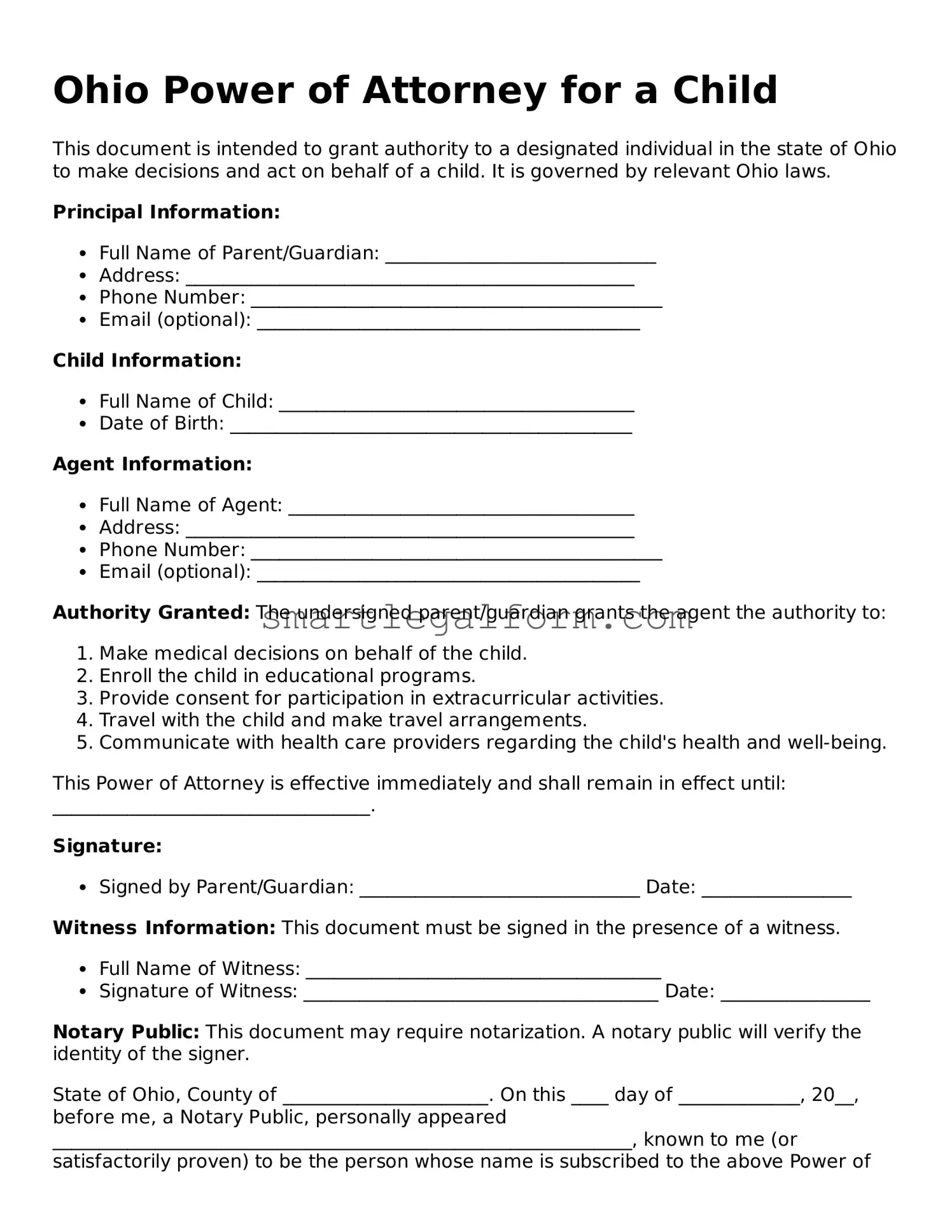Ohio Power of Attorney for a Child
This document is intended to grant authority to a designated individual in the state of Ohio to make decisions and act on behalf of a child. It is governed by relevant Ohio laws.
Principal Information:
- Full Name of Parent/Guardian: _____________________________
- Address: ________________________________________________
- Phone Number: ____________________________________________
- Email (optional): _________________________________________
Child Information:
- Full Name of Child: ______________________________________
- Date of Birth: ___________________________________________
Agent Information:
- Full Name of Agent: _____________________________________
- Address: ________________________________________________
- Phone Number: ____________________________________________
- Email (optional): _________________________________________
Authority Granted: The undersigned parent/guardian grants the agent the authority to:
- Make medical decisions on behalf of the child.
- Enroll the child in educational programs.
- Provide consent for participation in extracurricular activities.
- Travel with the child and make travel arrangements.
- Communicate with health care providers regarding the child's health and well-being.
This Power of Attorney is effective immediately and shall remain in effect until: __________________________________.
Signature:
- Signed by Parent/Guardian: ______________________________ Date: ________________
Witness Information: This document must be signed in the presence of a witness.
- Full Name of Witness: ______________________________________
- Signature of Witness: ______________________________________ Date: ________________
Notary Public: This document may require notarization. A notary public will verify the identity of the signer.
State of Ohio, County of ______________________. On this ____ day of _____________, 20__, before me, a Notary Public, personally appeared ______________________________________________________________, known to me (or satisfactorily proven) to be the person whose name is subscribed to the above Power of Attorney for a Child, and acknowledged that he/she executed the same for the purposes therein contained.
Notary Public Signature: ______________________________
My commission expires: _____________________________
